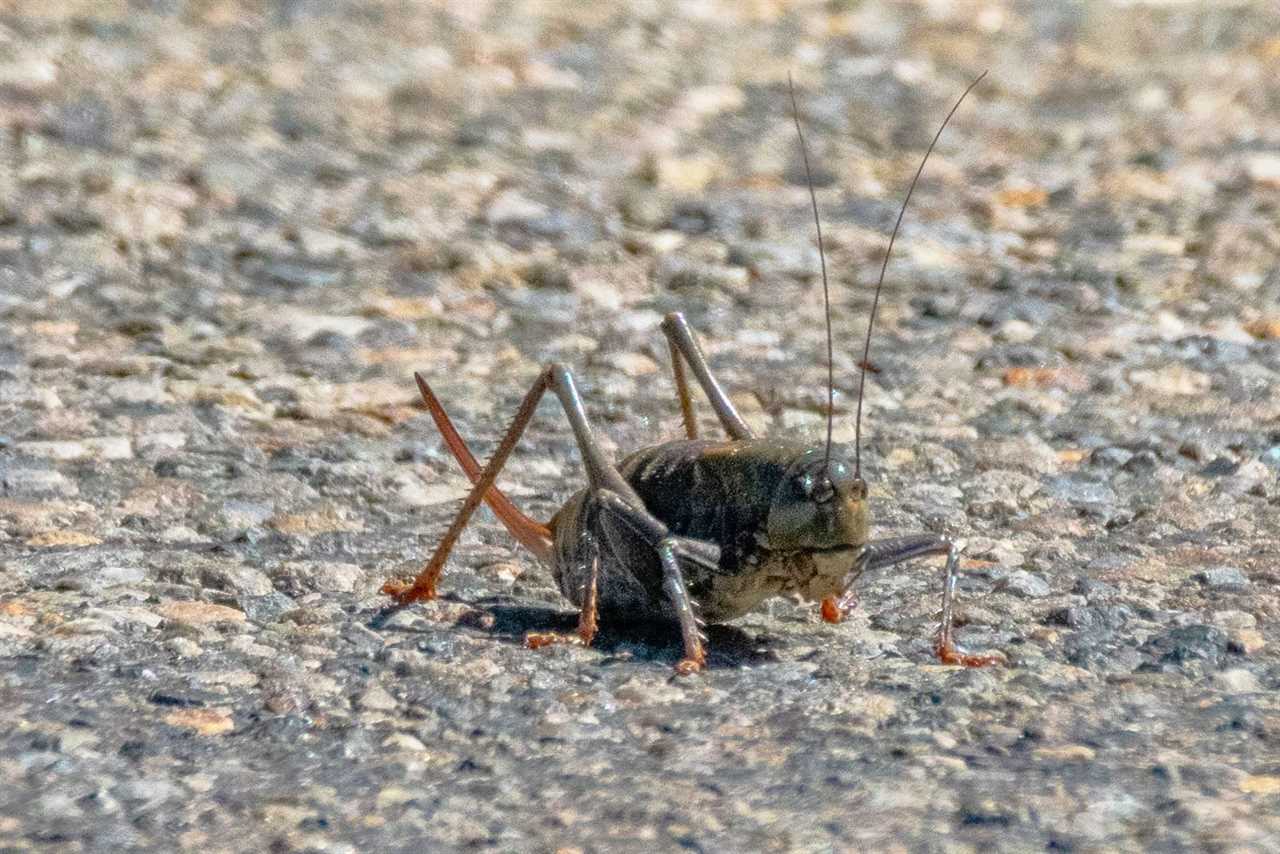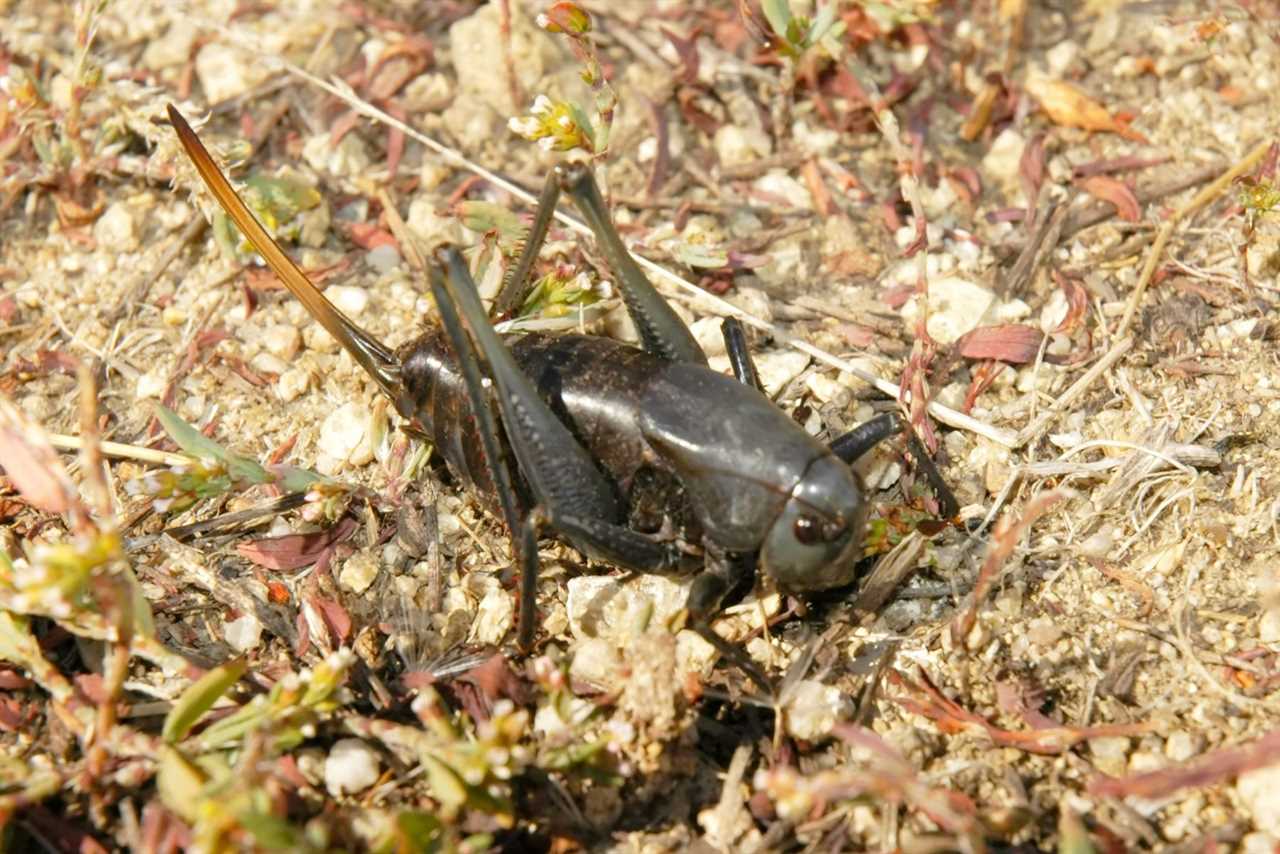The American West is known for a few spectacular mass migrations: sandhill cranes, American pronghorn and Mormon crickets. Yes, crickets. They might not fit into our imagery of the majestic West, but their swarms have been a staple of the region for time immemorial. In fact, in a cave in Wyoming, archaeologists discovered the cooked remains of several hundred Mormon crickets on a roasting pit dating back more than 2,000 years.
Today, Mormon crickets get their few weeks of fame on years when their bands (large groups) get massive enough to overtake towns. They become particularly problematic on roadways because as they get crushed by passing vehicles, the survivors linger on the pavement to eat the fallen. This cannibalism is a result of them needing protein and salt, and an injured or dead comrade is an easy scavenge to get a boost of both.
Here’s what else to know about Mormon crickets.
What Are Mormon Crickets?

Mormon crickets are large, ground-dwelling insects native to the Western U.S. They look somewhat like big grasshoppers, but they do not fly. Contrary to their name, they are actually a type of katydid and not a true cricket.
While they are most common on sagebrush rangelands, they can also live in the mountains. Some years they make the news, when they form large bands and migrate through towns and cities, as happened in 2023 in Nevada, Idaho and other parts of the West.
Why Are They Called Mormon Crickets?
Mormon crickets, aka shield-backed katydids or Anabrus simplex, got their common name from history associated with The Church of Jesus Christ of Latter-day Saints. Shortly after members of the church first came to Utah in the 1840s, a large infestation started decimating their crops.
“They asked for relief, which came in the form of seagulls that came through and ate the crickets,” says Jeff Knight, Nevada Department of Agriculture State Entomologist. “This is how they got the name of Mormon crickets, and also why the seagull is the state bird of Utah.”
The Mormon Cricket Lifecycle
Mormon crickets typically hatch in the spring as ground temperatures warm. As they grow, they go through a series of molts. It’s during this time that they tend to form bands and move regionally, up to a mile per day. This is when they interact with humans the most, sometimes swarming through whole towns.
By mid-summer the crickets begin laying eggs in the ground and then start to die off. Each year there is only one generation, and their numbers are also cyclical. There may be high populations for three to six years, then very few for the next eight to 15 years. Scientists suspect that drought encourages larger outbreaks.
Are Mormon Crickets Dangerous?

“While Mormon crickets may bite if picked up, they do not carry any diseases,” says Knight. But larger swarms do pose a risk to agriculture and are a menace to home gardens because they eat so many plants. They can also be a public safety hazard when they become crushed on roadways, which makes the pavement slick, especially if it rains soon afterward.
Although they can be destructive to humans, Mormon crickets are also a natural part of ecosystems and an important link in the food chain. They play an important role in nutrient recycling, speeding up the process of turning plants back into soil nutrients. They also feed California seagulls, crows, coyotes, rodents and other animals.
What To Do About Mormon Crickets
Mormon crickets do not fly and can’t jump very high, so cricket fences can keep them at bay. Construct a barrier that is 18 to 24 inches tall and covered in slick plastic that is tightly sealed to the ground. “When the crickets reach the plastic, they won’t be able to climb or jump over it and will go around,” says Knight.
Jerusalem Cricket vs. Mormon Cricket
Jerusalem crickets, aka potato bugs, stone crickets, skull crickets or sand crickets, are also flightless insects native to the Western U.S. They are also not true crickets, but not closely related to Mormon crickets. Jerusalem crickets spend most of their lives underground, where they are seldom seen by people. Their name likely came from a historical period when Western settlers involuntarily yelled “Jerusalem!” when startled. Once you’ve picked up a rock and seen one of these alien-looking bulbous insects sitting there, you’ll understand the surprise!
Did you miss our previous article...
https://rsssuperfeeds.com/life-hacks/customize-floating-docks-to-elevate-your-lake-house






